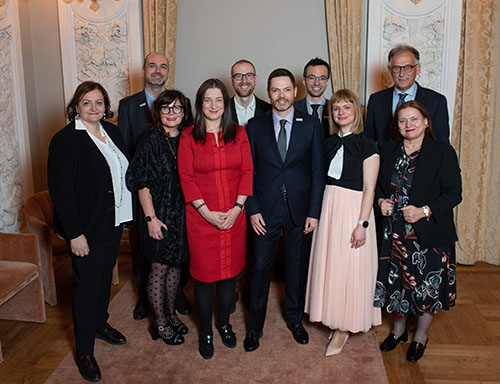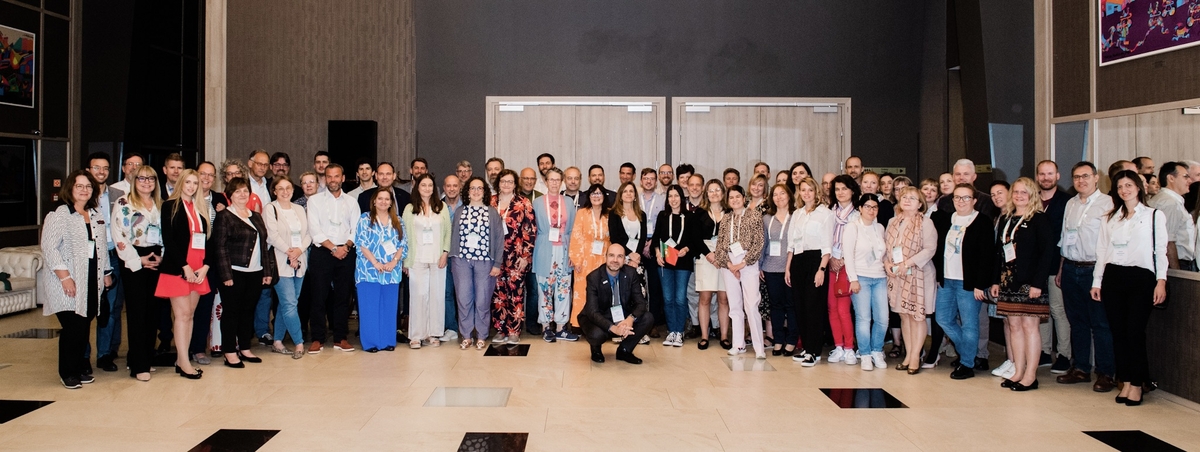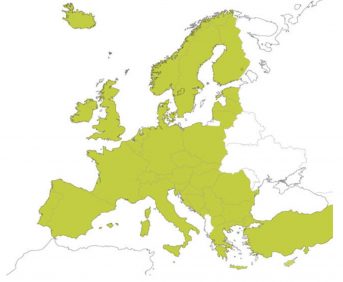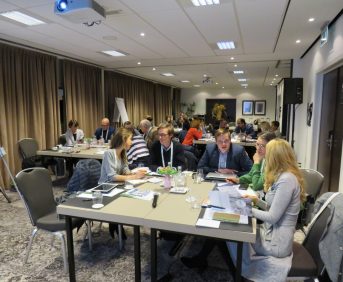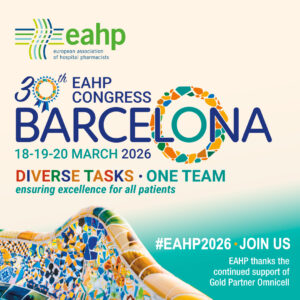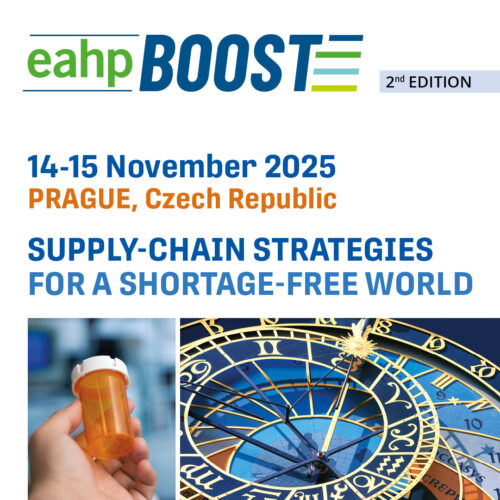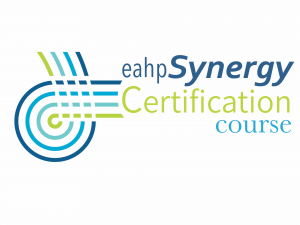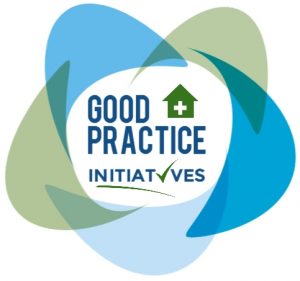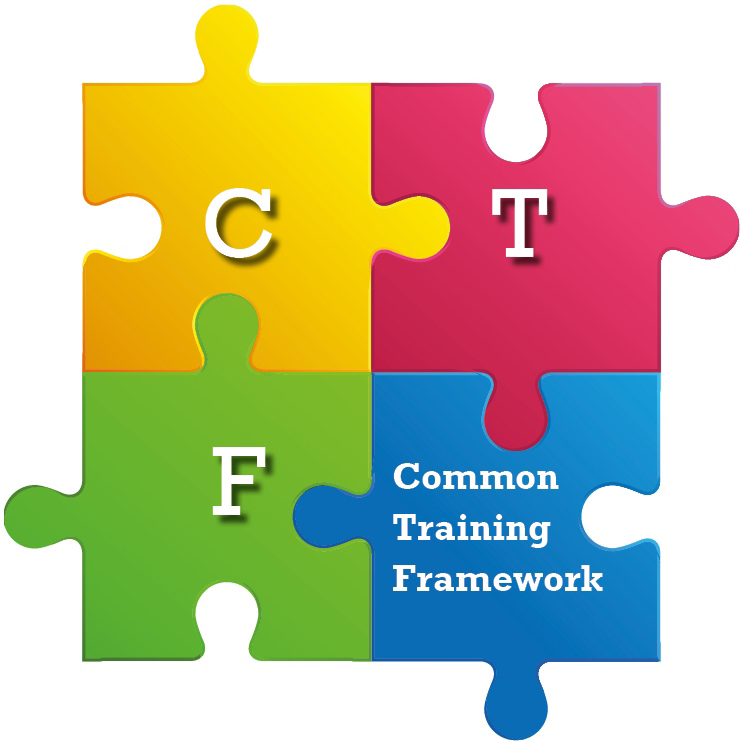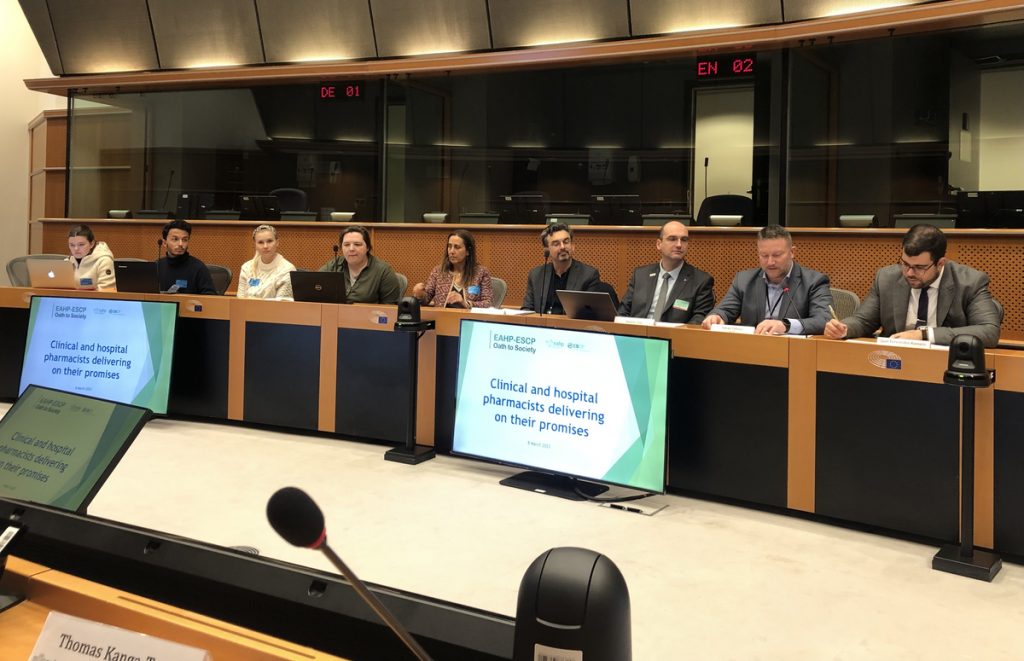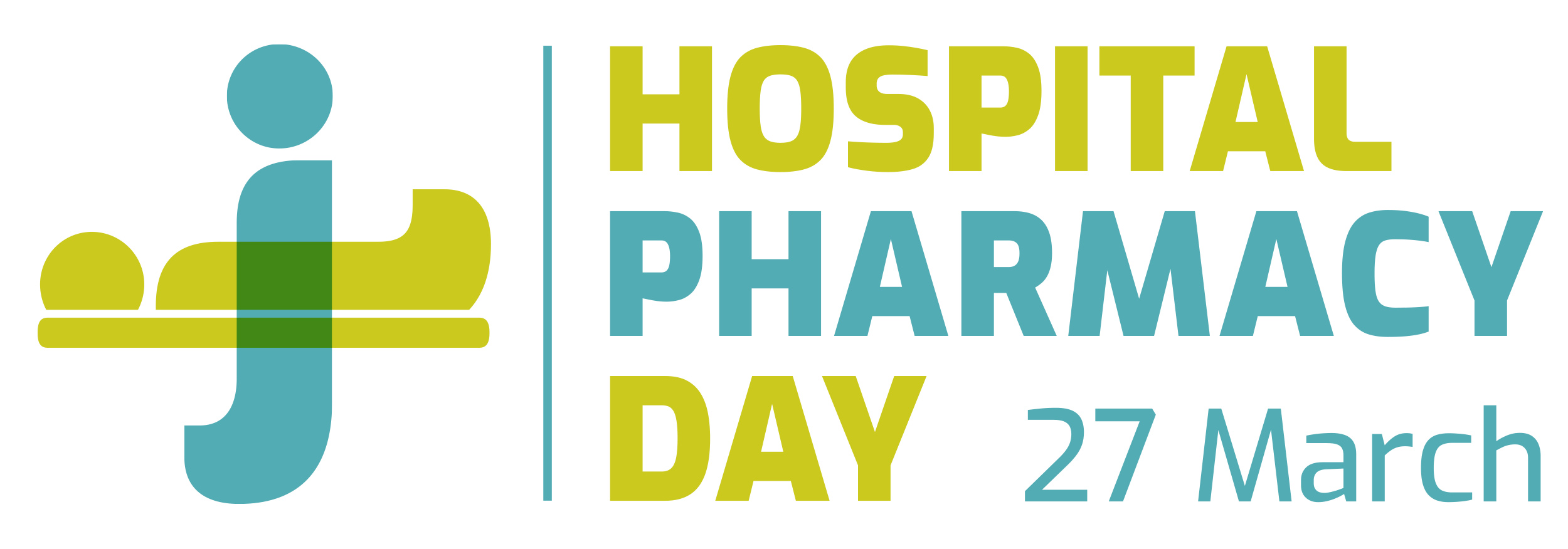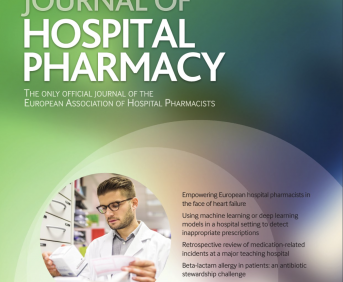TELEPHARMACOLOGICAL OUTPATIENT CLINIC: DEVELOPMENT OF A CROSS-SECTIONAL VIRTUAL POLYPHARMACY COUNSELLING SERVICE
Pdf

European Statement
Clinical Pharmacy Services
Author(s)
Lærke Karner Overgaard, Daniel Pilsgaard Henriksen
Why was it done?
Multimorbidity and polypharmacy pose significant challenges for healthcare systems. In Denmark, general practitioners (GPs) play a crucial role in coordinating patient care but also rely on specialist support for complex cases. The aim of this intervention was to provide easily accessible multidisciplinary counseling on polypharmacy for GPs.
What was done?
A virtual polypharmacy outpatient clinic was developed to provide cross-sectional specialist counseling for GPs.
How was it done?
The intervention was developed through a multidisciplinary approach, involving specialists in clinical pharmacology, GPs, and healthcare planners. The service provides virtual consultations to GPs in the Region of Southern Denmark (1.2 million inhabitants), offering multidisciplinary specialist counseling for patients on five or more medications. The multidisciplinary team consists of clinical pharmacists, consultants in clinical pharmacology and consultants in geriatrics. The process includes referral, medication review, video conference, and follow-up.
What has been achieved?
The outpatient clinic received 376 referrals comprising 366 unique patients (median age 73 years, IQR 65-81; 61.2% female) over five years (March 2019 to February 2024). The median number of drugs per patient at referral was 17 (IQR 13-21). Referrals increased from a median of 3.5 (IQR 1-5) per month in 2019-2020 to a median of 9 (IQR 6-13) per month in 2023-2024. GPs from 21 of 22 municipalities in the Region of Southern Denmark referred patients. The median time from referral to video conference was 15 days (IQR 8-26). The three most common weekdays for video conferences were: Thursday: 96 referrals (25.5%), Monday: 71 referrals (18.9%), and Wednesday: 71 referrals (18.9%)
The service was well-received by patients and GPs and recognized by national health authorities as a valuable model for managing multimorbidity. The Telepharmacological outpatient clinic thus demonstrates a successful model for integrating specialist support into primary care management of polypharmacy.
What next?
The effects of the outpatient clinic on the health outcomes of referred patients will be evaluated in a scientific study. Future efforts will focus on sharing experiences with national and international stakeholders to further develop the intervention and inspire new research in rational pharmacotherapy.
DEPRESCRIBING IN OLDER ADULTS: LET’S TALK!
Pdf

European Statement
Clinical Pharmacy Services
Author(s)
Steffy LEFAKOUONG, Mohamed MOSTEFA, Sarah BARBIEUX, Sophie VERNARDET, Isabelle LEFORT
Why was it done?
Institutional and multidisciplinary work has been carried out in the hospital since 2022 on reducing prescriptions of potentially inappropriate medications (PMIs) in older population (OP), in accordance with french recommandations.
What was done?
Our aim is to raise awareness among medical staff on the prescription of PMIs in OP through continuing education (CE) courses.
How was it done?
A PMI-specialized team composed of 2 geriatricians, 1 pharmacist and 1 pharmacy intern was formed.
CE is planned in the form of a structured medication review describing clinical cases based on discharge prescriptions of hospitalized patients, selected according to several criterias: >75 years old, ≥1 PMI on the prescription.
These prescriptions are analyzed by the specialized team using various reference documents, with a relevance audit grid provided by the regional drug authority as a basis.
The first MR was presented to the doctors and residents of the establishment’s various departments during a joint session.
A satisfaction survey was created to assess the interest and relevance of the course.
What has been achieved?
For our first session, we selected 3 prescriptions : two containing 4 PMIs each and one containing 2 PMIs.
A detail of each PMI was carried out with a focus on two main themes : deprescribing long-acting benzodiazepines and proton pump inhibitors.
Besides PMIs, a comprehensive prescription analysis was done by mentioning inadequate prescriptions from a geriatric medical view.
In total, we have a participation of 100% of the pharmacists, 89% of the geriatricians and 100% of pharmacy residents. Among the other departments, only 3 other physicians participated in the course.
According to the survey, 100% of participants said they were satisfied with the session and 44% wanted more interactive training.
What next?
The high participation of pharmacists and geriatricians, 2 teams of interest in the process of deprescribing MPIs, highlights the usefulness of this CE among healthcare professionals.
The structure of the session encourages constructive and collaborative exchanges while comparing visions of different professionals.
Nonetheless, a reflection on our approach’s appeal is necessary in order to increase the participation rate of physicians and medical residents absent during the session.
The satisfaction rate remains encouraging, and pushes us to renew this training periodically.
Enhance prescription review: artificial intelligence to improve efficiency and safety drug therapies
European Statement
Clinical Pharmacy Services
Author(s)
Ana Helena Ulbrich, Amanda Fonseca, Catherine Isoppo, Henrique Dias
Why was it done?
The motivation behind NoHarm stemmed from the time-consuming nature of the prescription review process, which required clinical pharmacists to assess not only drug interactions but also factors such as appropriateness, effectiveness, safety, adherence, and affordability of drug therapies. NoHarm was envisioned as a solution to systematize the workflow and provide cross-referencing of essential drug and inpatient information, thereby addressing these issues.
What was done?
The NoHarm initiative was developed to address challenges faced by clinical pharmacy teams during the prescription review process in a hospital setting. This open-source intelligent system was introduced to enhance the medication review process. The initiative was executed in a 420-bed public hospital in Brazil over a 17-month period to evaluate its impact on prescription reviews.
How was it done?
The implementation of NoHarm involved integrating the system with the hospital’s electronic health records to collect and compute all inpatient data. NoHarm utilized a drug knowledge base and intelligent algorithms to identify and alert healthcare professionals about inpatient risks. The algorithms were designed to cross-reference patient laboratory results with drug thresholds, adjust for liver and renal function, analyze drug usage patterns at the hospital, and extract patient risk factors from clinical notes, including diseases, adverse events, symptoms, and biometric data.
What has been achieved?
The number of medications assessed increased dramatically from 17,000 to 2,643,957 within the 17-month period, all while maintaining the same team size. Improved prescription review rates, rising from 65% to 94%, demonstrate the effectiveness of the system. Furthermore, these improvements in prescription reviews resulted in better clinical pharmacy services and contributed to reducing medication errors and associated risks in patient care at the hospital.
What next?
NoHarm is an open-source solution and an example of good practice in healthcare due to its achievements in streamlining prescription reviews and enhancing patient safety. Its successful implementation led to increased efficiency, higher prescription review rates, and substantial cost savings, showing its potential as a model for other healthcare settings. Its prospective global applicability makes it a solution to address medication errors and elevate the standard of care in healthcare institutions worldwide.
Implementation of a protocol to ensure continuity of pharmaceutical care in hospitalised outpatients
Pdf

European Statement
Clinical Pharmacy Services
Author(s)
MARCELO DOMINGUEZ CANTERO, CARMEN MARIA DOMINGUEZ SANTANA, MARCELINO MORA CORTES, ESMERALDA RIOS SANCHEZ, JUAN MANUEL BORRERO RUBIO
Why was it done?
Patients who withdraw medication from outpatient pharmacies in Spanish hospitals are provided with pharmaceutical care and pharmaceutical care stratification tools in specific outpatient pharmacy consultations. These patients are usually multi-pathological with multiple drug interactions, contraindications, and important adverse effects. Therefore, during the hospital admission of these outpatients, it was appropriate to provide continuous care from the hospital pharmacy. Before the implementation of the protocol, there was no specific and systematic follow-up of hospitalized outpatients.
What was done?
Implementation of a protocol that provides pharmaceutical care to outpatients during hospitalization, ensuring continuity of care through the pharmacy service.
How was it done?
The main problem with the implementation was the real-time detection of hospitalized outpatients. The development of a software tool to facilitate the location of patients provided an impetus for the implementation of the project. The computer tool selected patients who met the inclusion criteria (hospitalized outpatients with medication withdrawal in the outpatient unit in the last two months). Patients treated with erythropoietin and colony stimulants were excluded.
What has been achieved?
Seventy-nine patients were included in the study between April and September 2023; 62.1% were male. Main pathologies included 41.9% oncohaematologic diseases, 18.9% human immunodeficiency virus, and 17.7% immune-mediated inflammatory diseases.
The reason for admission was related to the pathology for which outpatient medication was withdrawn in 27 patients (34.2%), and six patients (7.6 %) were admitted due to an AE of the medication withdrawn in outpatients. Pharmaceutical interventions (PI) were performed in 21.5% of the patients reviewed, and 76.5% were accepted. PI reasons included discontinuation of treatment (64.7 %), modification (17.7 %), initiation (11.8 %) and monitoring (5.9 %).
What next?
With our protocol, we want to show that outpatients within the pool of patients admitted to a hospital are a priority target group. For these patients, the hospital pharmacist can improve treatment during hospitalization with a high degree of pharmaceutical intervention.
Introducing a clinical pharmacist in a paediatric palliative care unit: how to optimise complex drug regimens
Pdf

European Statement
Clinical Pharmacy Services
Author(s)
Daniele Mengato, Laura Camuffo, Anna Zanin, Fernando Baratiri, Barbara Roverato, Franca Benini, Francesca Venturini
Why was it done?
PPC patients are children with chronic or terminal illnesses requiring a high intensity of care. Because of their criticality, a strict clinical monitoring is needed, as well as personalised therapeutic strategies.
What was done?
The paediatric palliative care (PPC) unit aims to provide paediatric patients with the best possible care in the management of their disease to ensure the optimal quality of life. The pharmacist has joined the interdisciplinary team with the aim of improving drug management in both acute inpatient and chronic therapies.
How was it done?
From August 2021, the clinical pharmacist joined the PPC staff with the aim of improving medicine management. The pharmacist, primarily, took charge of the medication review process. Individual therapies were periodically reviewed by the multidisciplinary team on the basis of admissions and clinical changes. In addition, a formulary manual for healthcare professionals was drafted, with the description of the crushability of the most commonly used pharmaceutical forms in clinical practice by collecting and keeping up-to-date information from national and international handbooks.
What has been achieved?
Over the past eight months, initial drug reviews have been carried out for all 169 patients followed by the PPC unit, with collegial re-evaluations cyclically carried out for the most critical patients (15). These patients had at least 10 drugs to take each day and therefore assessments were made to simplify treatment regimens by providing 37 suggestions to physicians with the aim of reducing the risk of interactions and facilitating home therapy management. With regard to the handling of pharmaceutical forms, many galenic formulations have been proposed in order to reduce the crushing of solid forms as much as possible. Most of the suggestions were discussed and accepted by the medical team.
What next?
Clinical pharmacist’s intervention is crucial in the management of terminal or chronic therapies for critically ill patients. Next step will be the analysis of caregivers’ care burden, through a specific questionnaire that has already been validated, so as to improve the home management of this particular category of patients.
Pharmacoeconomical methods (ABC/VEN – analysis) for rationalization of medicines
European Statement
Selection, Procurement and Distribution
Author(s)
Alina Shramko, Veronika Haziahmetova
Why was it done?
Based on the results of the analysis, it is possible to answer the question whether it is advisable to spend financial resources, using the example of one healthcare facility; what steps should be taken to rationalize drug procurement; which drugs should be considered first of all for inclusion/exclusion from the procurement list.
What was done?
Currently, ABC/VEN analysis is one of the most effective pharmacoeconomical methods recommended by WHO for the use in the healthcare system. The use of pharmacoeconomic methods is carried out in accordance with the inherent effective use of drugs, and is carried out strictly in accordance with the principles of evidence-based medicine.
How was it done?
The ABC/VEN analysis was conducted based on data from the pharmacy of the LPI containing the costs of purchasing medicines during 2020. The VEN category was determined after a thorough review of the evidence available to us about the effectiveness, safety and cost of drugs.
What has been achieved?
The cost of drug provision to healthcare facilities in 2020 amounted to 62 943 951,38 rubles. The number of international generic name purchased and used was 355. About 35% of the funds were used for a group of vital medicines. The cost of the necessary medicines amounted to 43% of the funds – this corresponds to WHO recommendations.
In accordance with the ATX-classification, drugs affecting blood formation and blood are in the lead in terms of the volume of costs – 40.9% of all costs.
The drug is enoxaparin sodium, the leader in terms of costs in 2020. It is a direct anticoagulant (low molecular weight heparins with a molecular weight about 4500 daltons), which has an antithrombotic effect (2.38% of the total budget).
Also, the top ten leaders in terms of costs included saline sodium chloride solution – 6.1% of the annual budget, which probably indicates irrational excessive use of infusion therapy.
What next?
The application of pharmacoeconomical methods and principles of evidence-based medicine allowed us to assess the feasibility of drug procurement and serves to rationalize the use of medicines.
TOOL FOR INTERDISCIPLINARY COLLABORATION AND SHARED DECISION MAKING (submitted in 2019)
Pdf

European Statement
Clinical Pharmacy Services
Author(s)
Pernille Printzlau, Nanna Skyttegaard Mortensen, Signe Kristensen, Troels Bygum Knudsen, Nathalie King Otoo
Why was it done?
When the pharmacists make medication reviews it is often a long, detailed review with several interventions. A tool that would quickly give the physician an overview of the interventions suggested by the pharmacist was needed. Furthermore, a tool was needed in the process of shared decision making between the physician and the patient regarding the possibilities of deprescribing.
What was done?
We made a tool to improve the interdisciplinary collaboration around medication reviews and to help the process of shared decision making. The tool categorises interventions suggested by the pharmacist in red-yellow-green boxes, indicating the order of the interventions recommended by the pharmacist.
How was it done?
The tool was developed and tested by using the Model of Improvement. The physician stated that the tool gave him the needed overview and, in his experience, furthermore added value by visualising the interventions to the patient. Patients were interviewed after the consultation to evaluate how they perceived the tool and whether they felt involved in the decision making regarding their treatment and deprescribing.
What has been achieved?
A manageable and operationalisable tool for the physician to get a quick overview of the interventions suggested by the pharmacist. Furthermore, the tool visualises the interventions to the patient and supports the process of shared decision making during the consultation.
What next?
At our hospital we have clinical pharmacists making medication reviews at several different wards. The next step is to distribute the tool to pharmacists at other wards to strengthen the interdisciplinary collaboration and ensure the largest profit of the pharmacist’s medication reviews. We are also working on developing a similar tool to categorise found side effects to help the physician when deprescribing.
IMPLEMENTATION OF PATIENT INTERVIEW IN CONNECTION WITH MEDICATION REVIEW IN AN INPATIENT PSYCHIATRIC WARD (submitted in 2019)
Pdf

European Statement
Clinical Pharmacy Services
Author(s)
Majken Nørskov Petersen, Dorthe Bonnerup, Louise Thorsen, Lona Louring Christrup, Sune Puggaard Vogt Straszek, Charlotte Olesen
Why was it done?
Medication review with patient interview provides the opportunity to clarify the patient’s overall drug intake along with identifying the patient’s experienced side effects. Medication review with patient interview we believe gives a more realistic picture of experienced drug related problems (DRP) and potentially DRP. This again makes the medication review more relevant and useful to the doctors.
What was done?
The initiative took place in the Department of Affective Disorders, at Aarhus University Hospital, Denmark. Initially, the medication review was performed by hospital pharmacists without patient interview based only on medical records. We implemented a patient interview to give a more clinically relevant medication review. The interview included a structured questionnaire on typical side effects of antipsychotics.
How was it done?
The cost of a new workflow is always weighed against the outcome. We therefore planned and conducted a pilot study. The cost was measured as the time used for the patient interview and it was 17 minutes on average. We used DRP as the outcome. DRP is an accessible measure for the immediate outcome of a medication review. Sixteen medication reviews without patient interview were conducted and the same 16 patients were interviewed for a second medication review. Patient interview increased the number of identified DRP from 52 to 68. Due to the interview 28 new DRP were identified and 12 DRP found before the interview were withdrawn due to irrelevance.
What has been achieved?
Patient interview has been implemented in one of three inpatient psychiatric wards and in one of four outpatient clinics where the pharmacists conduct medication review. The structured questionnaire has been further developed and now includes common side effects caused by antipsychotics, antidepressants, benzodiazepines and mood stabilizers.
What next?
We still use the pilot study to show how medication review can be more relevant by using patient interview. The hospital pharmacy in Aarhus works on several levels in order to implement medication review, preferably with patient interview.
INTEGRATION OF THE CLINICAL PHARMACIST IN A MULTIDISCIPLINARY TEAM IN A BURNS UNIT
European Statement
Clinical Pharmacy Services
Author(s)
Ángel Guillermo Arévalo Bernabé, Pilar Lalueza Broto, Jordi Serracanta Doménech, Jacinto Caparrós Baena, José Manuel Collado Delfa, Jordi Aguilera Sáez, Romy Rossich Verdés, Pablo Sánchez Sancho, Juan Carlos Juárez Giménez, Maria Queralt Gorgas Torné
Why was it done?
The burns unit of a third-level hospital includes a patient’s great heterogeneity depending on his population group and his clinical condition (extension, degree and depth of his burns, etiological agent of the burns and associated comorbidities), which makes the managing of these patients complex and they need multidisciplinary solutions. In addition, extensive burns provoke physiopatological alterations that involve changes in the pharmacokinetical and the pharmacodynamical modelling of some drugs. The knowledge that the pharmacist has about the changes that take place in vascular dynamics, the clearance and the distribution volume of the drugs, and the degree of union from these to plasmatic proteins, makes his active participation in the care of the burns patient, and in the optimisation of his pharmacotherapeutic plan, very interesting.
What was done?
The integration of the pharmacist into a multidisciplinary group of assistance to the burns patient constituted as the Managing Committee of Cases and was integrated by plastic surgery, intensive medicine, intensive paediatric medicine, preventive medicine, infectious diseases, psychiatry, psychology, social work and infirmary, as well as pharmacy.
How was it done?
A protocol was devised that standardises and systematises the review of the pharmacotherapeutic plan of all patients in the burns unit, including burn critical and paediatric. Also, there is included a model of record and codificate of pharmaceutical interventions. The multidisciplinary group meets weekly and every patient is analysed from all clinical points of view, the pharmacist intervening in relation to the pharmacotherapeutic and nutritional plan.
What has been achieved?
The active integration of the pharmacist has been achieved in the clinical group of assistance to the burns patient. In addition, there has been created a collaborative attitude that has benefited joint projects of investigation. The degree of acceptance of the offers of modification that the pharmacist realises is 90%.
What next?
The following step must be, depending on the obtained results, to establish improvement assistance measures, including the accomplishment of protocols and the development of investigation projects that help to generate knowledge about the use of some drugs in burns patients, such as immunoglobulin or proteolitic enzymes for the extraction of bed sores.
USING AN ELECTRONIC ALGORITHM TO IDENTIFY THE MOST RELEVANT PATIENTS FOR MEDICATION REVIEW
Pdf

European Statement
Clinical Pharmacy Services
Author(s)
Charlotte Olesen
Why was it done?
In the Regional Hospital in Horsens, Central Denmark Region (covering 217,000 citizens) medication reviews by clinical pharmacists were performed on a few wards. Patients were selected to receive medication reviews on the basis of pre-defined criteria. The criteria were not evidence-based and were individual for each ward and pharmacist. This screening was time-consuming, as we screened every patient in the EPS to find relevant patients for medication review. Assuming that patients at high risk of medication errors will benefit most from medication reviews, we wanted to identify, using an evidence-based algorithm, these patients automatically across all wards at the hospital, thereby reducing resources during screening and allowing more time on the relevant patients.
What was done?
An algorithm, to identify patients who would benefit most from a medication review, was developed using data from the Electronic Prescribing System (EPS). The system could produce a list of patients daily considered relevant for medication review.
How was it done?
MEdication RIsk Score (MERIS), a validated algorithm to identify patients in high risk of medication errors, was implemented using data from the EPS. Each hospitalised patient’s risk score was automatically calculated, and a list with risk scores was generated. Patients with highest risk were selected to receive a medication review by a clinical pharmacist. We validated the algorithm on two wards. The variables used in MERIS are reduced renal function, the total number of drugs and the risk of individual drugs to cause harm and interactions.
What has been achieved?
Instead of individual and time-consuming screening, electronic uniform screening has been implemented in our clinical pharmacy service. Our limited time is now used carrying out medication review on patients with the highest risk of medication errors instead of patients with less benefit.
What next?
The electronic version of MERIS is now used on two wards at our hospital. The next step is to include more wards so all patients with high-risk factors will receive a medication review from a clinical pharmacist. Furthermore, clinical pharmacists in other hospitals in the Central Denmark Region will also implement the electronic algorithm.
